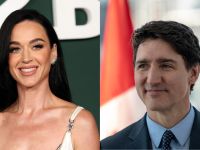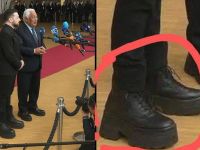How can people laugh or enjoy themselves in a cavern?
The question was posed by famous Egyptian cartoonist George Bahjouri. But his fellow cartoonists Saad Hjou of Syria, Palestinian Baha’a Bukhari, Imad Hajjaj and Jelal Rifai of Jordan had the same questions in their minds..
The five artists are currently in Jerash holding their first exhibition of caricature as part of the ancient city’s annual festival of art and culture.
In an interview with albawaba, Bahjouri commented that life is mysterious by nature and an artist loves mystery, and so when he draws he leaves an area for the viewer of his work to discover and enjoy.
But this logic, he added, is often rejected by newspapers’ chief editors who might ask the artist to add a short comment to his sketch.
Bukhari then interrupted saying that owners of newspapers presume that people cannot understand or read into the cartoons, adding “ I believe that the reader is smarter than me and has knowledge that leads him to buy the newspaper, and if he takes a look at the caricature then he is twice smarter”.
Hajjaj who recently faced a crisis with the Jordanian daily Al-Rai said the cartoonists art is the most popular, and has a language that is easy to understand but involve serious connotations adding that editors-in-chief may interfere to say that the sketches are not clear or necessary whereby the cartoonist find himself facing censorship lines which they (editors-in-chief) have created.
Speaking about the recent crisis which led to his dismissal from the newspaper Hajjaj said the editor-in-chief and the newspaper administration based their decisions on security and financial power but “ the wall to which I stood consisted of my popularity and the people.”
Commenting on a question from Albawaba on the need for the symbol-character in the cartoons, Palestinian Bukhari said pan-Arab causes need such symbols to pose certain ideas and notions, because a certain character, he said, could express people’s opinions, the artists’comments or the artist who may place himself on the sketch as a witness or as a signature which means that the symbol could be used as a mediator.
Are all Cartoons Political?
Yes, Hajjaj says, even if it is not evident in the drawing noting that social conditions are by nature a result of any political situation. While Hajo agreed, Rifai, Bukhari and Bahjouri maintained that the popularity of any cartoon depends on its reflection of any event or the way it touches on their social and political aspects.
Bahjouri was surprised that the exhibition was held in a cavern which he said looked like a grave, something the other cartoonists agreed on saying that coupled with other factors, the turnout at the exhibition was low with lack of demand for their books and drawings.
They added that people were not familiar with such exhibitions since it was the first time cartoons were put on display at Jerash festival.
Impact of Censorship
Bukhari says that in Palestine where a state is in the making, he has not yet encountered censorship “maybe the censors are preoccupied with major issues”, he quipped.
Hajjaj commented that he encountered more than a censor saying “the advertiser is a censor, the editor-in-chief is a censor and the security is a censor, an endless chain of censors”.
But Hajjo argued that the financial factor is a dominating one because an artist, he said, could enjoy his freedom by being financially independent thus becoming immune to any censorship except the theme of his cartoon -- Albawaba.com
© 2000 Al Bawaba (www.albawaba.com)







